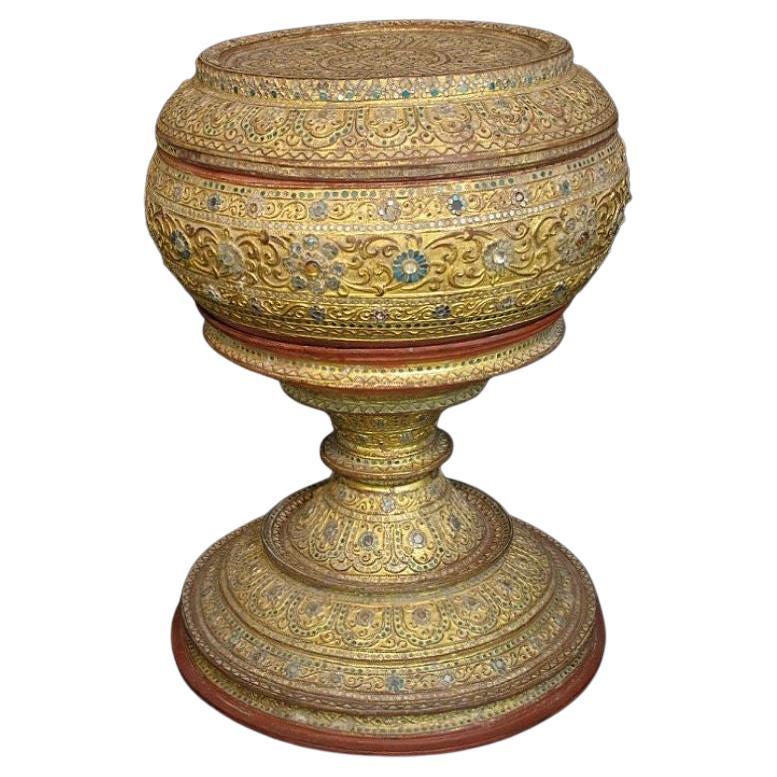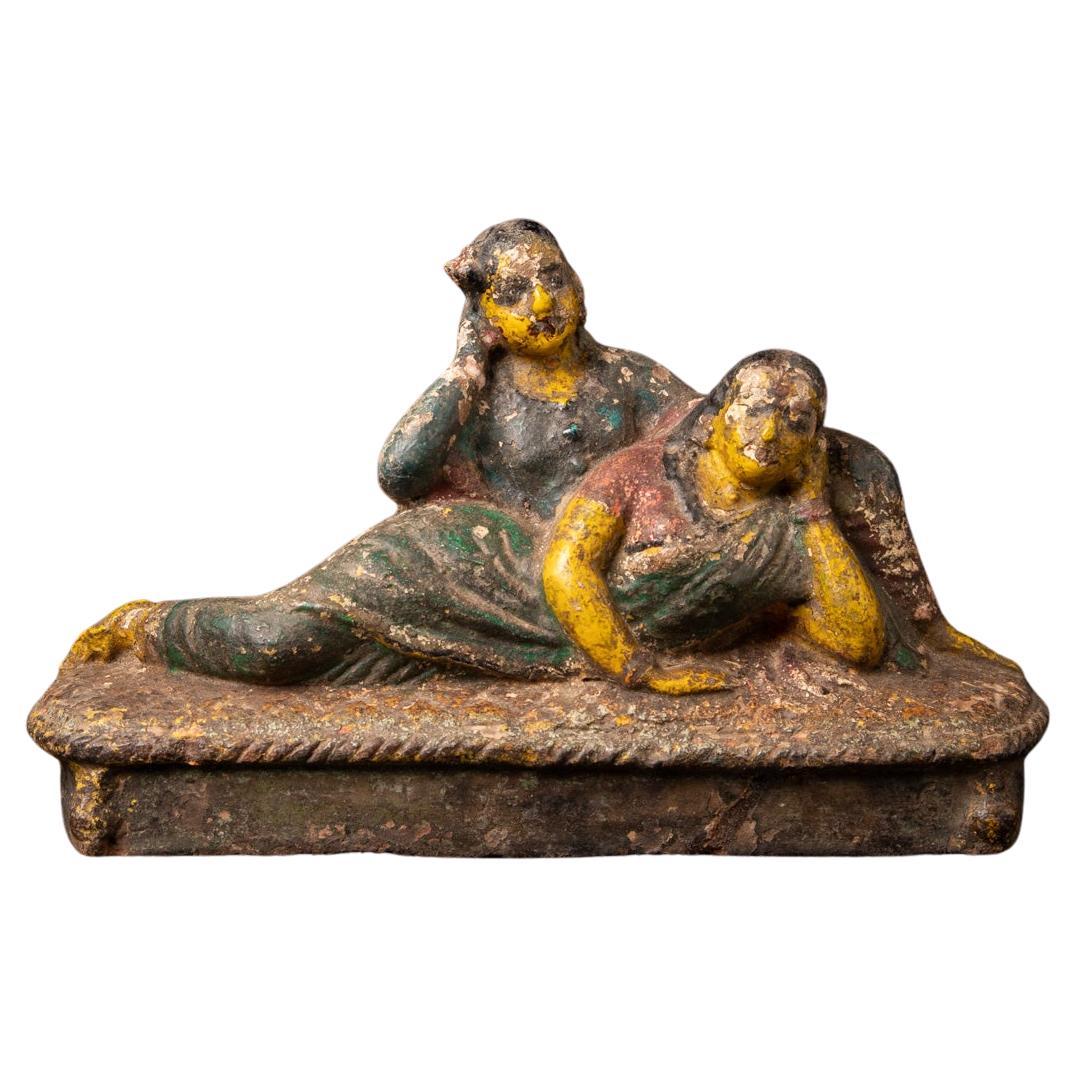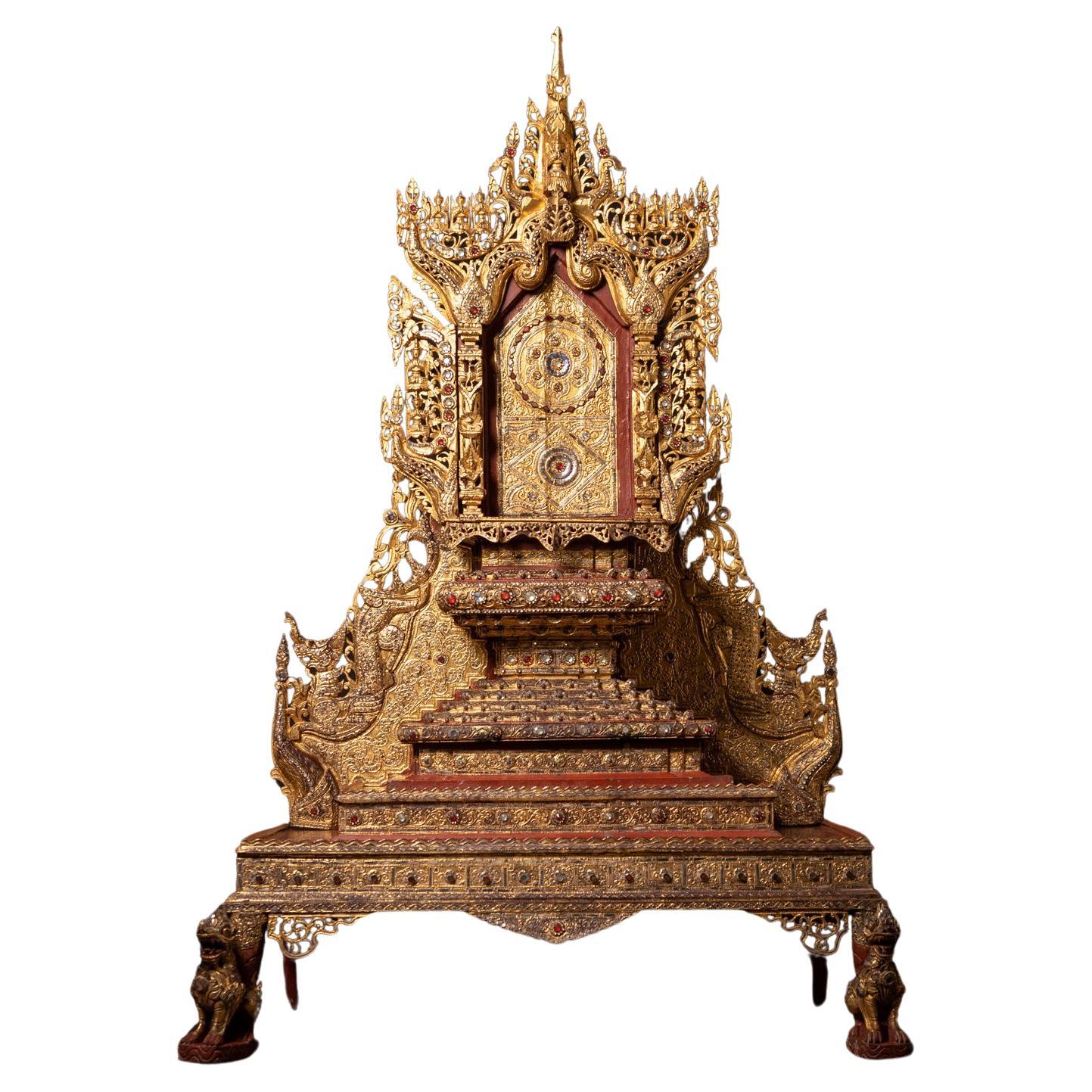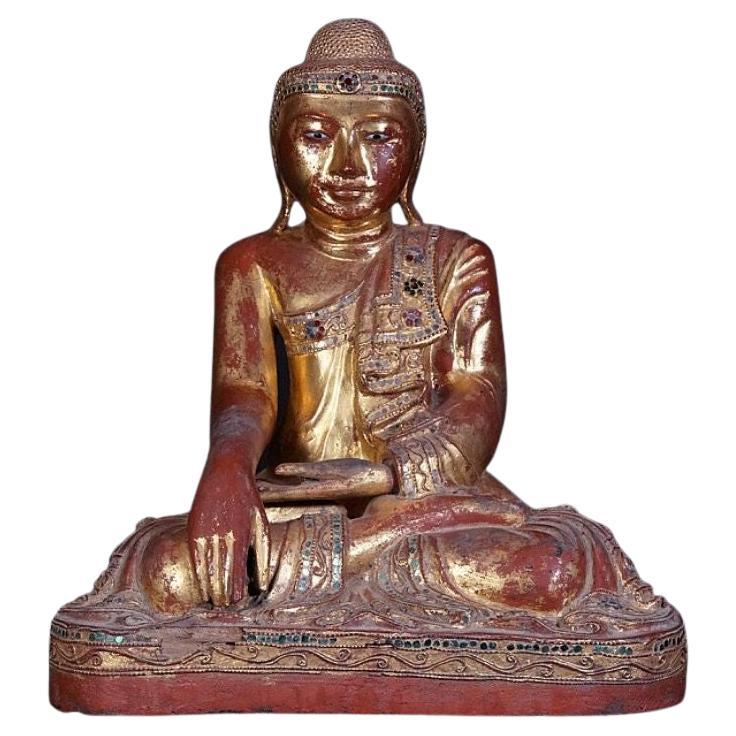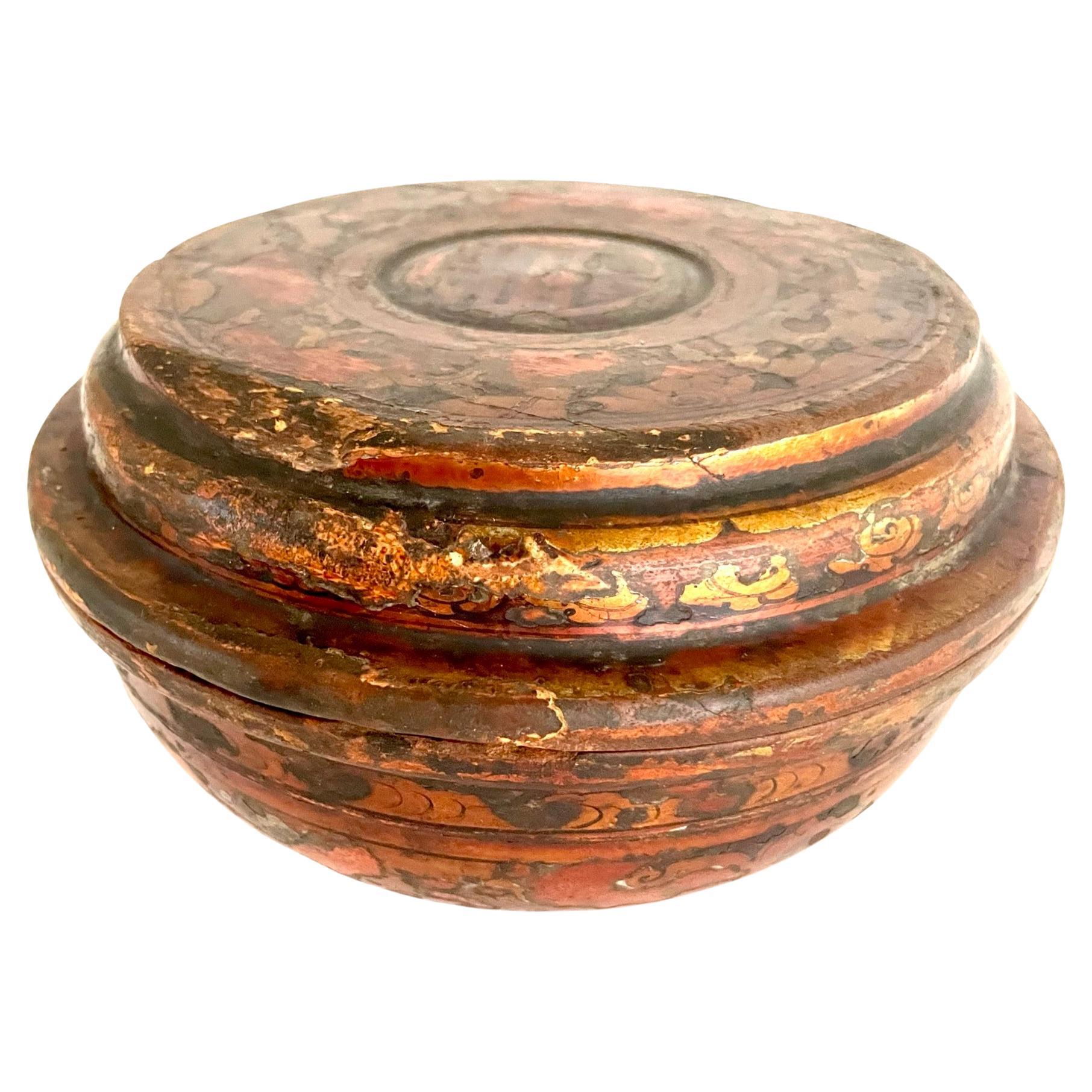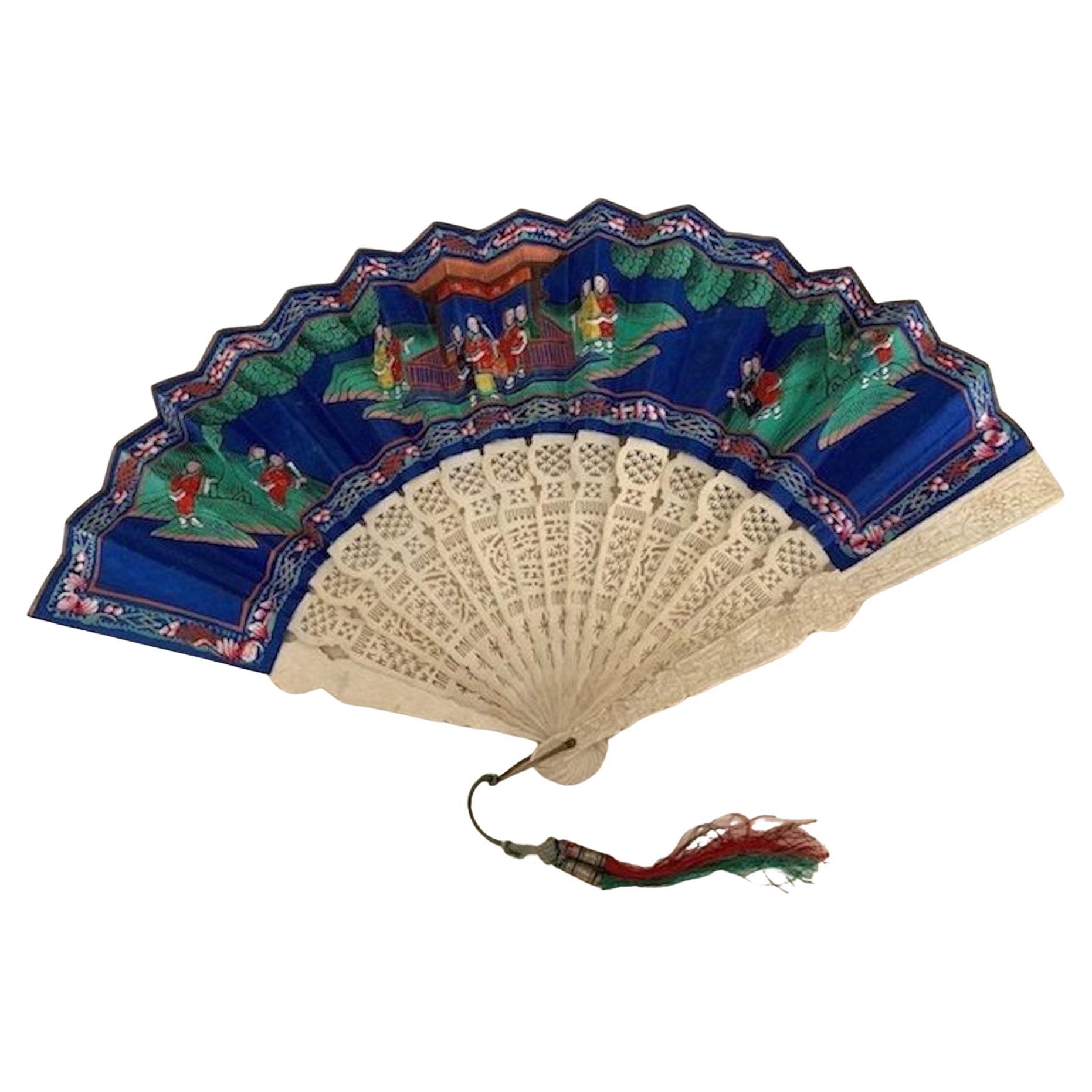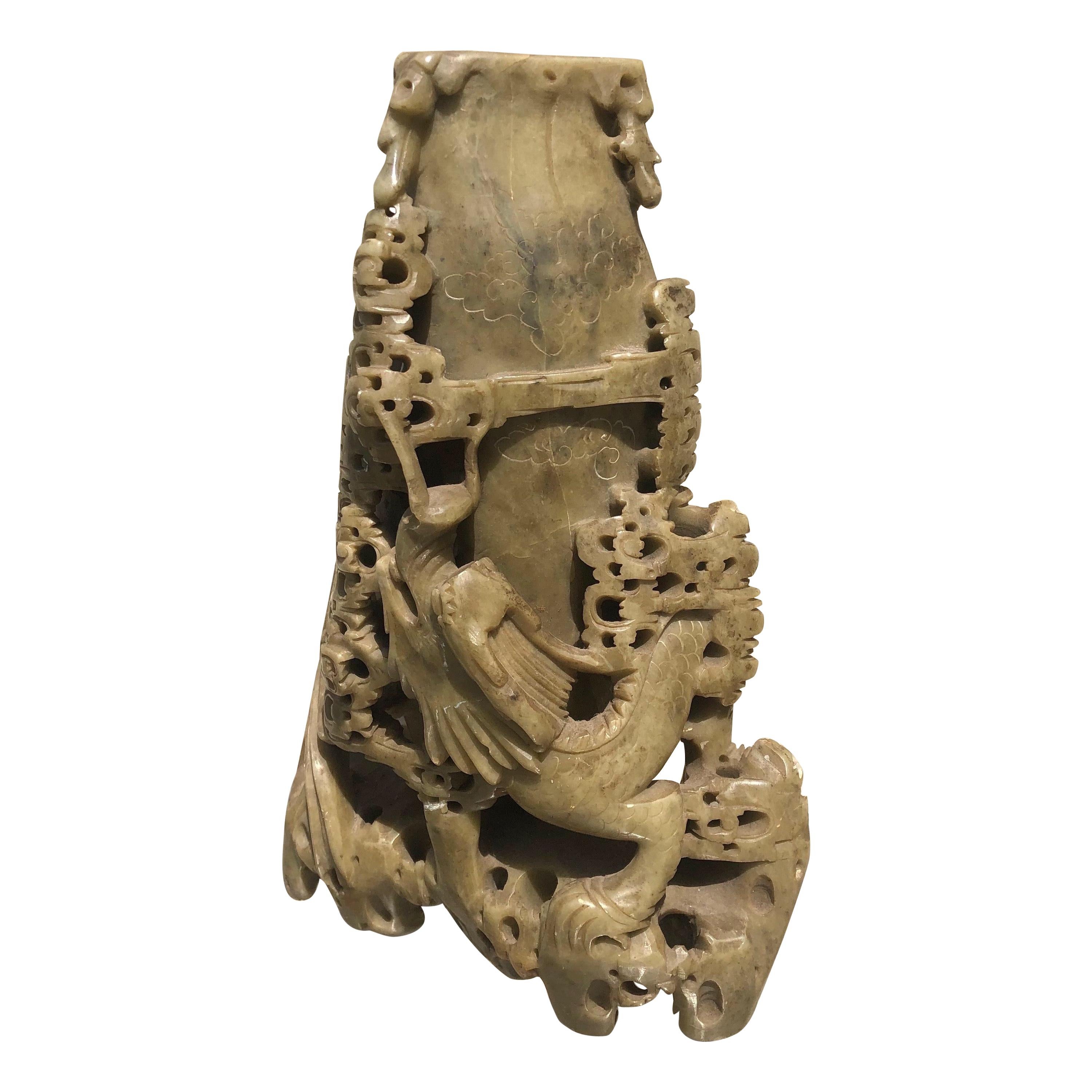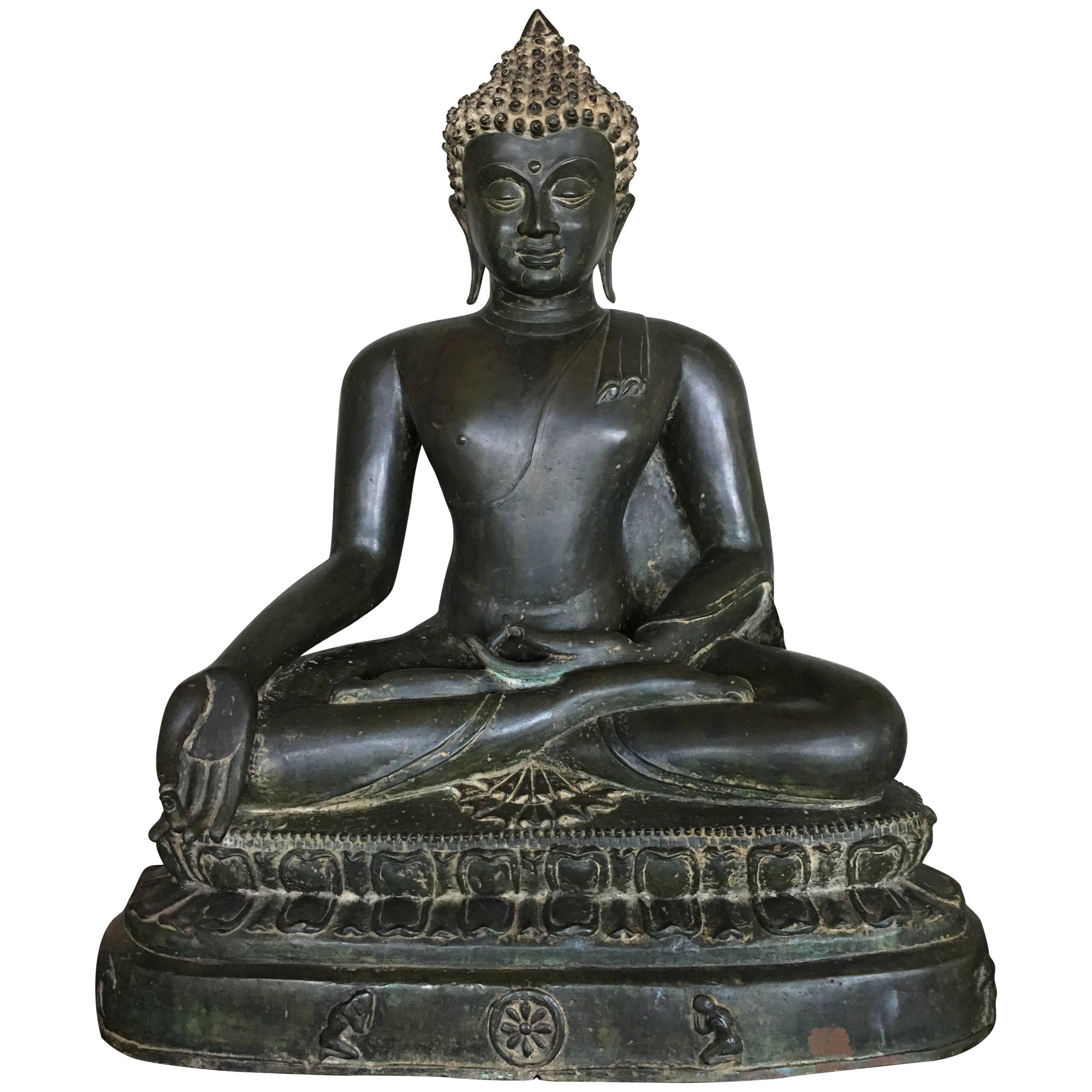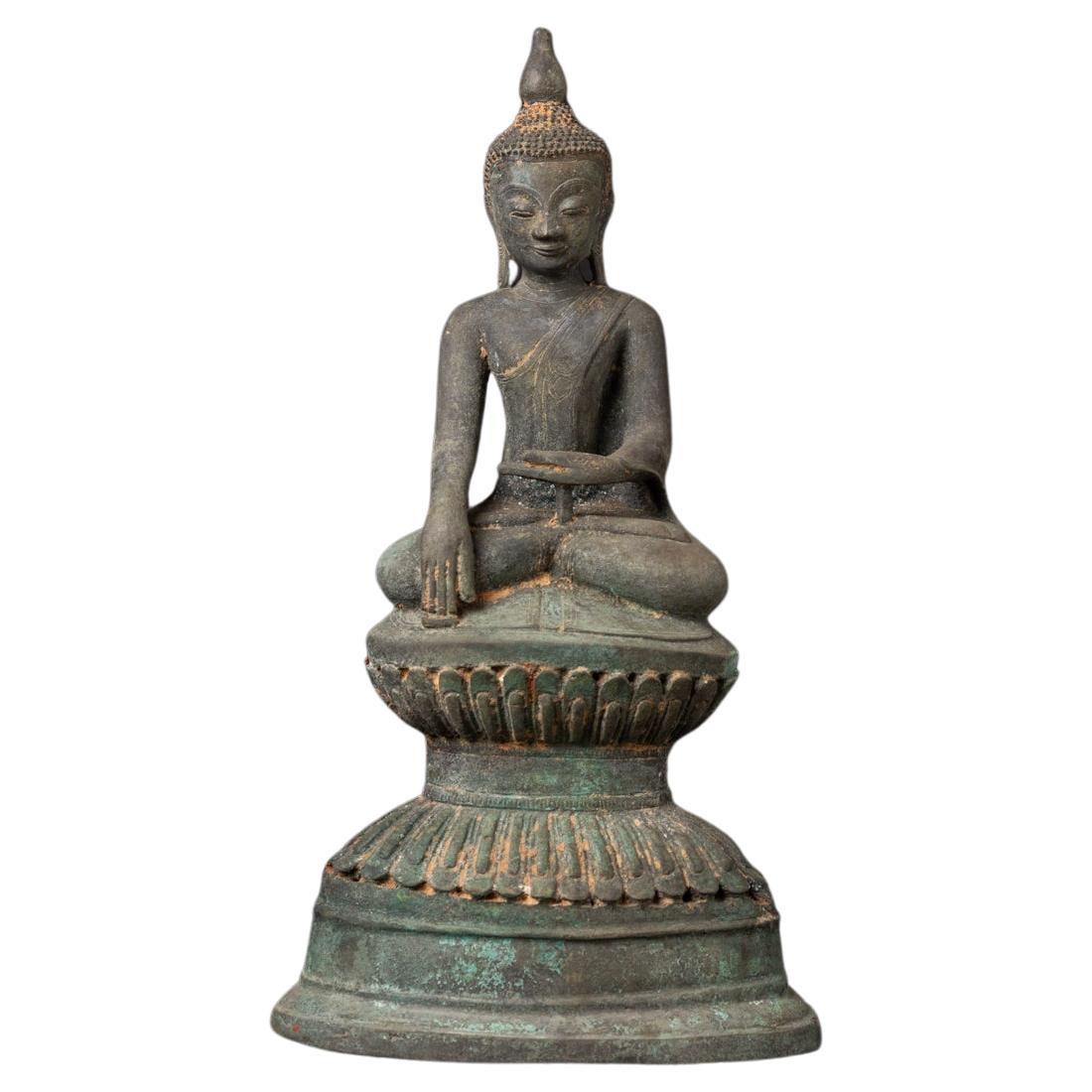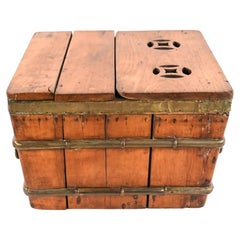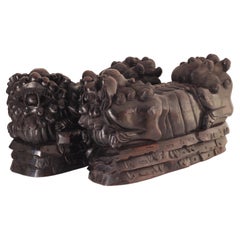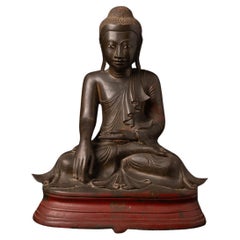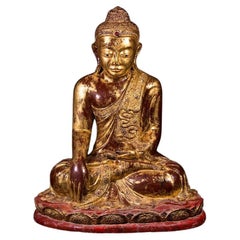
Pair of Late 19th Century Wood and Gilt Lions from Asia
View Similar Items
Want more images or videos?
Request additional images or videos from the seller
1 of 10
Pair of Late 19th Century Wood and Gilt Lions from Asia
About the Item
- Dimensions:Height: 8.5 in (21.59 cm)Width: 16.25 in (41.28 cm)Depth: 3.5 in (8.89 cm)
- Sold As:Set of 2
- Materials and Techniques:
- Place of Origin:
- Period:
- Date of Manufacture:circa 1880
- Condition:Wear consistent with age and use.
- Seller Location:Middleburg, VA
- Reference Number:1stDibs: LU5841229786252
About the Seller
5.0
Vetted Seller
These experienced sellers undergo a comprehensive evaluation by our team of in-house experts.
Established in 1996
1stDibs seller since 2021
47 sales on 1stDibs
Typical response time: 17 hours
More From This SellerView All
- Small Late 18th Century Chinese Patinated Bronze Figure of Zodiac BoarLocated in Middleburg, VALate 18th Century Chinese Patinated Bronze Figure of Zodiac Boar Cast as a seated boar, wearing arm bands and holding a flower in each hand with a textured l...Category
Antique Late 18th Century Chinese Sculptures and Carvings
MaterialsBronze
- 18th Century Wood, Brass and Steel Chinese Ice Chest Line with Galvanized SteelLocated in Middleburg, VA18th century Wood, Brass and Steel Chinese Ice Chest. Interior lined with galvanized steel. Exterior has brass slats and handles. Measures: 13.5" H...Category
Antique 18th Century Chinese More Asian Art, Objects and Furniture
MaterialsBrass, Steel
- Late 19th Century German Carved Black Forest Wood Trophy PlaqueLocated in Middleburg, VALate 19th century German carved black Forest wood trophy plaque. This intricately carved piece depicts horns, spear, and hunter's pouch hung on plaque en...Category
Antique Late 19th Century German Black Forest Mounted Objects
MaterialsWood
- Pair of Late 19th Century Bronze & Venetian Glass in the Shape of Tree TrunksLocated in Middleburg, VAPair of early 20th century bronze & Venetian glass lamps in the shape of tree trunks depicting hunting scene. One lamp has a deer and the other a hunting dog. Both lamps have etched ...Category
Antique Late 19th Century Austrian Sporting Art Table Lamps
MaterialsBronze
- Late 19th Century Wood Framed Folk Art Painting Depicting Hound Dogs by RiverLocated in Middleburg, VALate 19th Century Wood Framed Folk Art Painting Depicting Hound Dogs by River. The two dogs are hunting water fowl. Wood framing is modern. United States, 1...Category
Antique Late 19th Century American Folk Art Paintings
MaterialsCanvas, Paint
- Large 19th Century Chinese Papier Mâché Painted Box Depicting Lion and FlowersLocated in Middleburg, VALarge 19th century Chinese papier mâché Painted Box Depicting Lion and Flowers. China, 1801-1900 Measures: 10.25" H, 17.75" Dm.Category
Antique 19th Century Chinese Decorative Boxes
MaterialsPaint, Paper
You May Also Like
- A pair of 19th Century carved Foo temple dogs or Chinese guardian LionsLocated in London, GBChinese guardian lions, or imperial guardian lions, are a traditional Chinese architectural ornament. Typically made of stone, they are also known as stone lions or shishi (石獅; shíshī). They are known in colloquial English as lion dogs or foo dogs / fu dogs. The concept, which originated and became popular in Chinese Buddhism, features a pair of highly stylized lions—often one male with a ball and one female with a cub—which were thought to protect the building from harmful spiritual influences and harmful people that might be a threat. Used in imperial Chinese palaces and tombs, the lions subsequently spread to other parts of Asia including Japan (see komainu), Korea, Philippines, Tibet, Thailand, Myanmar, Vietnam, Sri Lanka, Nepal, Cambodia, Laos, and Malaysia. There has been extensive interaction between Chinese mythology and Confucianism, Taoism, and Buddhism. Elements of pre-Han dynasty mythology such as those in Classic of Mountains and Seas were adapted into these belief systems as they developed (in the case of Taoism), or were assimilated into Chinese culture (in the case of Buddhism). Elements from the teachings and beliefs of these systems became incorporated into Chinese mythology. For example, the Taoist belief of a spiritual Paradise became incorporated into mythology as the place where immortals and deities used to dwell. Sometimes mythological and religious ideas have become widespread across China's many regions and diverse ethnic societies. In other cases, beliefs are more limited to certain social groups, for example, the veneration of white stones by the Qiang. One mythological theme that has a long history and many variations involves a shamanic world view, for example in the cases of Mongolian shamanism among the Mongols, Hmong shamanism among the Miao people, and the shamanic beliefs of the Qing dynasty from 1643 to 1912, derived from the Manchus. Politically, mythology was often used to legitimize the dynasties of China, with the founding house of a dynasty claiming a divine descent. Mythology and philosophy. Further information: Chinese philosophy True mythology is distinguished from philosophical treatises and theories. Elaborations on the Wu Xing are not really part of mythology, although belief in five elements could appear. The Hundred Schools of Thought is a phrase suggesting the diversity of philosophical thought that developed during the Warring States of China. Then, and subsequently, philosophical movements had a complicated relationship with mythology. However, as far as they influence or are influenced by mythology, divides the philosophical camps into two rough halves, a Liberal group and a Conservative group. The liberal group being associated with the idea of individuality and change, for example as seen in the mythology of divination in China, such as the mythology of the dragon horse that delivered the eight bagua diagrams to Fu Xi, and methods of individual empowerment as seen in the Yi Jing (Book of Changes). The Liberal tendency is towards individual freedom, Daoism, and Nature. The relationship of the Conservative philosophies to mythology is seen in the legendary Nine Tripod Cauldrons, mythology about the emperors and central bureaucratic governance, Confucianism, written histories, ceremonial observances, subordination of the individual to the social groups of family and state, and a fixation on stability and enduring institutions. The distinction between the Liberal and Conservative is very general, but important in Chinese thought. Contradictions can be found in the details, however these are often traditional, such as the embrace by Confucius of the philosophical aspects of the Yi Jing, and the back-and-forth about the Mandate of Heaven wherein one dynasty ends and another begins based according to accounts (some of heavily mythological) where the Way of Heaven results in change, but then a new ethical stable dynasty becomes established. Examples of this include the stories of Yi Yin, Tang of Shang and Jie of Xia or the similar fantastic stories around Duke of Zhou and King Zhou of Shang. Mythology exists in relationship with other aspects of society and culture, such as ritual. Various rituals are explained by mythology. For example, the ritual burning of mortuary banknotes (Hell Money), lighting fireworks, and so on. A good example of the relationship of Chinese mythology and ritual is the Yubu, also known as the Steps or Paces of Yu. During the course of his activities in controlling the Great Flood, Yu was supposed to have so fatigued himself that he lost all the hair from his legs and developed a serious limp. Daoist practitioners sometimes incorporate a curiously choreographed pedal locomotion into various rituals. Mythology and practice, one explains the other: in these rituals, the sacred time of Yu merges with the sacral practice of the present. Various ideas about the nature of the earth, the universe, and their relationship to each other have historically existed as either a background or a focus of mythologies. One typical view is of a square earth separated from a round sky by sky pillars (mountains, trees, or undefined). Above the sky is the realm of Heaven, often viewed of as a vast area, with many inhabitants. Often the heavenly inhabitants are thought to be of an "as above so below" nature, their lives and social arrangements being parallel to those on earth, with a hierarchical government run by a supreme emperor, many palaces and lesser dwellings, a vast bureaucracy of many functions, clerks, guards, and servants. Below was a vast under ground land, also known as Diyu, Yellow Springs, Hell, and other terms. As time progressed, the idea of an underground land in which the souls of the departed were punished for their misdeeds during life became explicit, related to developments in Daoism and Buddhism. The underground world also came to be conceived of as inhabited by a vast bureaucracy, with kings, judges, torturers, conductors of souls, minor bureaucrats, recording secretaries, similar to the structure of society in the Middle Kingdom (earthly China). Chinese temple Dogs...Category
Antique 1860s Chinese Chinese Export Sculptures and Carvings
MaterialsHardwood
- Late 19th century Antique bronze Burmese Mandalay Buddha from BurmaLocated in DEVENTER, NLThis antique bronze Buddha statue is a truly unique and special collectible piece. Standing at 44 cm high, 34 cm wide, and 24.8 cm deep, it is made of bronze and it is in Mandalay style, depicting the Bhumisparsha mudra. This statue is believed to originate from Burma...Category
Antique Late 19th Century Burmese Sculptures and Carvings
MaterialsBronze
- 19th Century, Wooden Mandalay Buddha from BurmaLocated in DEVENTER, NLMaterial: wood 77 cm high 63 cm wide and 41 cm deep Weight: 30.25 kgs Gilded with 24 krt. gold Mandalay style Bhumisparsha mudra Originating from Burma 19th century With in...Category
Antique 19th Century Burmese Sculptures and Carvings
MaterialsWood
- 19th Century Burmese Offering Vessel from BurmaLocated in DEVENTER, NLMaterial: lacquerware 63 cm high 48 cm diameter Weight: 6.2 kgs 3 parts Mandalay style Originating from Burma 19th century Goldplated with 24 krt. gold.Category
Antique 19th Century Burmese Sculptures and Carvings
MaterialsLacquer
- 19th century Antique pottery Radha and Krishna statue from IndiaLocated in DEVENTER, NLMaterial: Pottery 17,2 cm high 28,5 cm wide and 9,8 cm deep 19th century Weight: 2,02 kgs Originating from India Nr: 3733-70Category
Antique 19th Century Indian Sculptures and Carvings
MaterialsPottery
- 19th century Large Antique Burmese Throne from BurmaLocated in DEVENTER, NLMaterial : wood 201 cm high 128 cm wide and 92 cm deep Gilded with 24 krt. gold Mandalay style 19th century Very special ! Can be shipped worldwide Originating from Burma Nr: 3688-18Category
Antique 19th Century Burmese Sculptures and Carvings
MaterialsWood
Recently Viewed
View AllMore Ways To Browse
Wood Encased
Burmese Wood
Burma Wood
Stone Garden Japanese
19th Century Japanese Carved Furniture
Japanese Wood Carving
North American Japanese Garden
20 Century Chinese China
Asian Wooden Sculptures
Antique Japanese Carving
Japanese Black Stone
Temple Stone
Buddha Bronze
Bronze Buddha
Chinese Carved Wood Carving
Buddha Statue
Asian Antique Wooden Art
Temple Bronze



